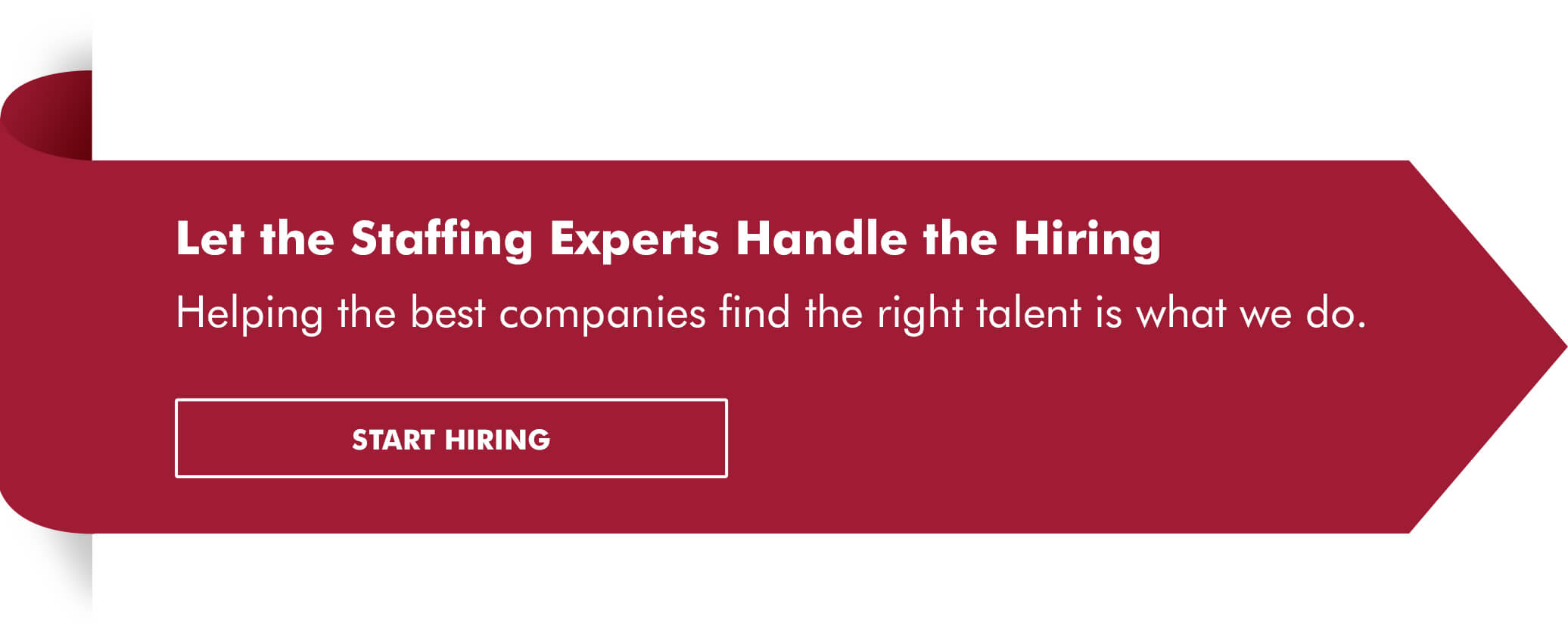Savvy managers know that making a good hire starts long before candidate selection, the interview or even resume screening. It begins with fashioning a compelling job description.
Think of the job description as your hiring blueprint. Design it well, and the rest of the process will flow much more easily. Furthermore, a thoughtfully crafted job description can differentiate you from rivals who are less conscientious in this respect, giving you an edge as you compete for the best candidates.
In addition, the benefits of a great job description outlive the hiring process, setting the stage for a new employee’s success. With the job description in hand, a rookie team member will have clear guidelines and an accurate picture of the manager’s performance expectations from day one.
Find out how skills-based hiring could help solve your talent shortage.
Essential elements of a great job description
If you’re repeatedly copying and pasting the same job description into new job postings, you probably won’t attract the candidates you’re looking for. This document should change with each posting to suit the specifics of the available position. Here’s what you need to cover:
- Job title — Be specific and avoid creative titles like wizard and rock star, which are vague and can be off-putting to candidates. Instead, choose a title that job seekers are searching for and will understand. Titles should be short: Refer to a position as a bookkeeper, even if the official internal title is Bookkeeper and Occasional Copier Technician/Intern Manager, Level 15.
- Opening hook — A powerful opening connects with your audience and generates excitement about the position’s possibilities. A compelling introduction will also work to encourage potential candidates to read the rest of your job ad.
- Organization and culture — To attract the best candidates, you’ll want to make them excited at the prospect of working with you. Promote the company’s strengths, lay out its mission and paint a picture of the corporate culture and what it’s truly like to work there.
- Department and reporting structure — Identifying the department will help job seekers research the position and decide whether it’s right for them, making the application process and the vetting smoother. The candidate also needs to know how the position fits into your organization, including the number of direct reports the person would supervise if you’re staffing for a managerial role.
- Summary of the position — This is the heart of the job description. In a few sentences, give the job’s broadest responsibility, function or priority within the organization. Include an overview of expectations for the person who fills the role, their immediate and long-term objectives, and define what constitutes exceptional performance. If this section is running long, consider presenting it in bullet points to make it easier to digest.
- Key duties and responsibilities — This narrows down the primary responsibility mentioned in the summary section. Help candidates envision themselves already in the role. Give a very rough percentage of the time to be spent on each duty (which should add up to 100%) and how often each is performed (daily, weekly or periodically) and verify this is still correct by running the description past the current team.
- Compensation — There are pros and cons to including a salary range in a job posting, but candidates should know upfront whether the position is exempt or non-exempt. If you decide not to give a figure, include language about offering a competitive salary. Also, highlight any benefits and perks — for many job seekers, that information is as important as the salary figure.
- Job location and work arrangements — Be sure the posting includes the location of the office where the employee would work. Emphasize any options for remote or hybrid working and flextime since such arrangements are hugely attractive to today’s candidates.
- A qualifying statement — No job ad will include an exhaustive list of duties — nor should it. Make clear that the employee’s responsibilities may be revised from time to time based on business needs.
- Qualifications and educational requirements — What skills, training, language fluency, education or relevant experience should the successful applicant have? The more specific you are here, the more qualified the applicants who apply are likely to be. Make sure the qualifications you set are necessities rather than nice-to-haves, or you might deter individuals with otherwise great potential.
- Soft skills — Consider what qualities and interpersonal skills would contribute to superior performance. List the four or five of these you value in top performers already holding this or a similar role in your company and explain why these qualities are needed for the job.
Updating job descriptions should be an ongoing process for employers. See this post to learn why.
4 tips for a standout job description
Consider these pointers as you create or update your job postings:
- Write the job description in plain language — Avoid jargon that might be common within your company but inscrutable to outsiders. Clear and concise language will be appreciated by job seekers and minimize the risk of misunderstandings in the hiring process. Also, avoid gender-coded terms like “aggressive,” “dominate” and “fearless,” which are more likely to appeal to men than women.
- Be honest — Job descriptions that overstate or understate what a position entails can lead to hiring mistakes and hard feelings later on. Make sure you present an up-to-date, candid picture of the job. Don’t be tempted to candy-coat realities about long hours, the pace of work or other such aspects of the position. Well-written job descriptions leave no question as to a position’s roles and responsibilities.
- Gather input from existing employees — As you collect details to update or write a job description, you may want to seek input from key personnel who will work directly with the new hire. They may be able to provide valuable insight because they understand the day-to-day workings of the department and the company.
- Use the job description to evaluate resumes — When evaluating candidates, compare the job description to each resume and look for commonalities. The people whose applications match most of your requirements will be the ones most likely to make your interview shortlist.
Not sure whether you have the capacity to review and update all your job descriptions? The good news is that you don’t have to go it alone: Teaming up with a specialized staffing firm gives you access to hiring experts who can not only do the job of recruiting for you but also help you create an outstanding job description. Most importantly, you’ll gain access to an extensive database of talented candidates you might not find searching on your own.






